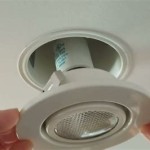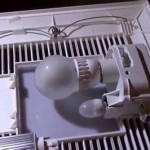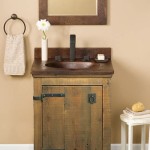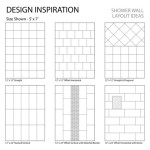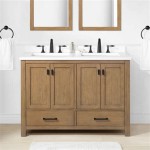Master Bathroom Double Vanity Ideas: A Comprehensive Guide
The master bathroom is often considered a sanctuary within the home, a private space for relaxation and personal care. Central to this space is the vanity, and a double vanity can significantly enhance both functionality and aesthetics, especially in shared bathrooms. This article explores various double vanity ideas, encompassing different styles, materials, layouts, and considerations for creating a practical and visually appealing master bathroom.
When planning a master bathroom renovation or build, the double vanity should be one of the first elements considered. Its size and placement will dictate the flow and overall design of the room. Careful planning regarding storage, plumbing, and lighting is essential to maximize usability and optimize the space.
Space Optimization & Layout Considerations
Before delving into aesthetics, it's crucial to assess the available space and determine the optimal layout for the double vanity. Master bathrooms vary significantly in size, and the vanity should be proportional to the room's dimensions. Cramping a large double vanity into a small space can make the bathroom feel cluttered and uncomfortable, while a too-small vanity in a large bathroom may look disproportionate.
Standard double vanities range from 60 to 72 inches in width, but custom sizes are also available to suit specific needs. Consider the distance between the sinks, allowing adequate elbow room for each user. A minimum distance of 30 inches between sink centers is generally recommended. Furthermore, ensure sufficient clearance in front of the vanity for comfortable movement. A minimum of 30 inches, ideally 36 inches, between the vanity and any opposing walls or fixtures is necessary. This allows adequate space for opening drawers and cabinets without obstruction.
Layout options include side-by-side vanities, which are the most common, and vanities positioned on opposite walls. The latter layout works well in long, narrow bathrooms, maximizing space and creating a more open feel. Corner vanities can also be considered in smaller spaces, but these may require custom design and careful planning to optimize storage and functionality.
Plumbing considerations are paramount when planning the layout. Existing plumbing locations may limit design options, but relocating plumbing is often possible, though it can add to the overall cost. Ensure that both sinks have adequate water supply and drainage, and that the plumbing is concealed within the vanity cabinet or wall to maintain a clean and uncluttered appearance. Adequate access for future maintenance is also crucial.
Lighting is another critical aspect to consider during the layout phase. Optimal lighting is essential for daily tasks such as shaving and applying makeup. Incorporate lighting above or to the sides of each sink to provide even illumination and minimize shadows. Natural light is also highly desirable in a bathroom, so consider the placement of the vanity in relation to windows. If possible, position the vanity to maximize natural light, but be mindful of glare and heat exposure. Light fixtures should complement the style of the vanity and the overall bathroom design.
Material Selection: Aesthetics and Durability
The choice of materials for a double vanity significantly impacts its appearance, durability, and maintenance requirements. From the cabinet construction to the countertop and sink materials, each element should be carefully selected to create a cohesive and functional design.
Cabinet materials commonly include solid wood, plywood, MDF (Medium-Density Fiberboard), and particleboard. Solid wood is a premium option, offering exceptional durability and a timeless aesthetic. However, it is also the most expensive and requires proper sealing to prevent warping or damage from moisture. Plywood is a more affordable alternative to solid wood, offering good strength and water resistance. MDF is a cost-effective option that is smooth and paintable, but it is more susceptible to water damage than solid wood or plywood. Particleboard is the least expensive option, but it is also the least durable and most prone to water damage. Regardless of the material chosen, ensure that it is properly sealed and finished to protect it from moisture.
Countertop materials are equally diverse, each offering unique characteristics in terms of aesthetics, durability, and maintenance. Granite and quartz are popular choices, offering excellent durability, heat resistance, and a luxurious appearance. Granite is a natural stone, so each slab is unique, while quartz is an engineered stone that offers consistent color and pattern. Marble is another elegant option, but it is more porous than granite or quartz and requires more diligent sealing and maintenance to prevent staining. Solid surface materials, such as Corian, are non-porous and easy to clean, but they are less heat resistant than natural stone. Laminate countertops are a cost-effective option that are available in a wide range of colors and patterns, but they are less durable than other materials and can be prone to scratching and chipping. Concrete countertops offer a modern, industrial aesthetic, but they require sealing and can be prone to cracking.
Sink materials also contribute to the overall look and feel of the vanity. Undermount sinks are installed beneath the countertop, creating a seamless and easy-to-clean surface. Vessel sinks sit on top of the countertop, adding a unique and stylish touch. Integrated sinks are made from the same material as the countertop, creating a monolithic and contemporary appearance. Common sink materials include porcelain, fireclay, stainless steel, and glass. Porcelain and fireclay are durable and easy to clean, while stainless steel offers a modern and hygienic option. Glass sinks can add a dramatic and artistic element, but they may require more frequent cleaning to maintain their clarity.
In addition to the primary materials, consider the hardware and accessories. Faucet finishes, cabinet pulls, and mirror frames should complement the overall style and contribute to the cohesive design. Choose high-quality hardware that is durable and resistant to corrosion. Consider incorporating features such as soft-close drawers and doors for added convenience and longevity.
Style and Design Elements
The aesthetic style of the double vanity should align with the overall design of the master bathroom and the homeowner's personal preferences. From traditional to contemporary, there are numerous styles to choose from, each with its unique characteristics and design elements.
Traditional vanities often feature ornate detailing, such as raised panel doors, carved moldings, and decorative hardware. These vanities are typically made from solid wood and finished with rich stains or paints. Countertops may be made from granite, marble, or other natural stones. Traditional vanities evoke a sense of timeless elegance and sophistication.
Contemporary vanities are characterized by clean lines, minimalist designs, and modern materials. These vanities often feature flat-panel doors, sleek hardware, and integrated sinks. Countertops may be made from quartz, solid surface materials, or concrete. Contemporary vanities offer a modern and streamlined aesthetic.
Transitional vanities blend elements of both traditional and contemporary styles, creating a versatile and timeless look. These vanities may feature shaker-style doors, simple hardware, and a mix of natural and engineered materials. Transitional vanities offer a balance of classic and modern design elements.
Rustic vanities embrace natural materials and textures, such as reclaimed wood, stone, and metal. These vanities often feature distressed finishes, exposed hardware, and unique details. Rustic vanities create a warm and inviting atmosphere.
In addition to the overall style, consider incorporating specific design elements to enhance the visual appeal of the double vanity. Backsplashes can protect the wall from water damage and add a decorative touch. Mirrors are essential for functionality and can also serve as a focal point. Consider incorporating decorative lighting, such as sconces or pendant lights, to add ambiance and illuminate the vanity area. Storage solutions, such as drawers, cabinets, and open shelving, should be both functional and aesthetically pleasing. Incorporate decorative accessories, such as vases, candles, and artwork, to personalize the space and add character.
Finally, consider the color palette of the double vanity and the bathroom as a whole. Neutral colors, such as white, gray, and beige, are timeless and versatile. Bold colors can add a pop of personality and create a focal point. Consider the existing colors in the bathroom, such as the wall color, flooring, and tile, and choose colors that complement the overall design. Pay attention to the undertones of the colors to ensure that they coordinate well with each other. With careful planning and attention to detail, a double vanity can become a stunning and functional centerpiece of the master bathroom.

Double Vanity Bathroom Design Ideas Decorating Topics

Gorgeous Double Vanity Design Ideas Bathrooms With Vanities

Master Bathroom Vanity Design Ideas

9 Ideas For The Space Between Double Sinks In Bathroom

Double Vanity Ideas Traditional Bathroom Milton Development

Best Master Bathroom Remodel Ideas 2024 Planner 5d

40 Bathroom Vanities You Ll Love For Every Style

Pin On Bathroom Renovation

8 Beautiful Double Bathroom Vanity Ideas Oppein

6 Modern Bathroom Vanity Design Ideas Lily Ann Cabinets
Related Posts
